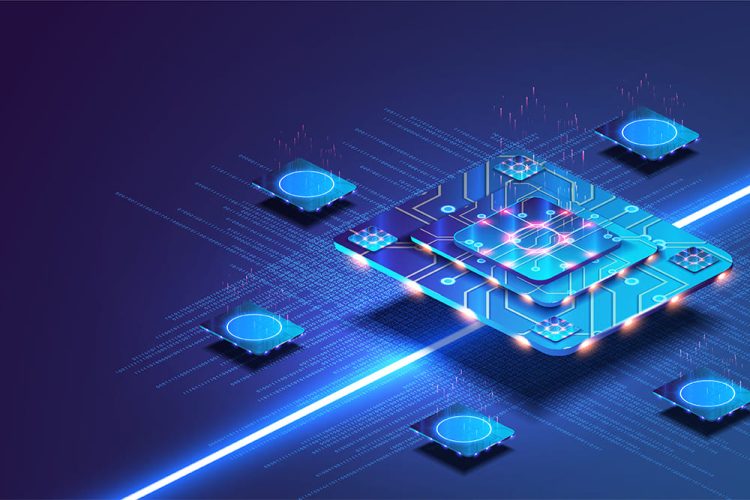Abstract
Quantum computing, long a theoretical concept confined to physics laboratories, has entered a transformative phase that promises to redefine the very limits of computation. Leveraging the principles of superposition, entanglement, and quantum interference, quantum computers offer computational capabilities exponentially superior to classical systems for specific problem domains. This article explores the historical evolution of quantum computing, the underlying physical and mathematical principles, contemporary technical breakthroughs, and the global implications for science, industry, and society. By examining both the promises and challenges of quantum computation, this essay illuminates why this technological revolution represents not merely an incremental improvement but a paradigm shift in information processing.
Introduction
For decades, computing technology has followed a trajectory defined by Moore’s Law: transistors double roughly every two years, and computational power grows in predictable steps. Classical computers—whether mainframes, desktops, or mobile devices—have achieved remarkable feats within this framework. Yet certain classes of problems remain intractable. Tasks such as integer factorization for large numbers, simulating complex chemical systems, or optimizing combinatorial networks require resources that classical architectures cannot feasibly provide.
Enter quantum computing. Unlike classical bits that exist in one of two states, 0 or 1, quantum bits—or qubits—can exist in a superposition of states. Through entanglement, the state of one qubit can be correlated with another, enabling parallel computations on a scale unimaginable for conventional hardware. Quantum interference allows computational paths to amplify correct results while cancelling incorrect ones. The combination of these principles creates a fundamentally new paradigm: one where certain computations can be performed exponentially faster than any known classical algorithm.
The goal of this article is to provide a comprehensive overview of quantum computing, exploring its theoretical foundations, practical implementations, current breakthroughs, and societal implications. We will examine how quantum computers challenge our traditional understanding of computation, and why this technology may catalyze revolutions in cryptography, materials science, artificial intelligence, and beyond.
Historical Background
The theoretical roots of quantum computing can be traced back to the 1980s. In 1981, physicist Richard Feynman famously proposed that classical computers could not efficiently simulate quantum systems, suggesting instead that computers operating under quantum mechanical principles might succeed. Shortly thereafter, David Deutsch formulated the concept of a universal quantum computer, establishing a formal framework for quantum computation. These early works emphasized that quantum systems were not merely faster classical computers but fundamentally different machines that leverage nature’s quantum rules.
In the 1990s, practical algorithms emerged that demonstrated quantum advantage. Peter Shor developed an algorithm capable of factoring large integers in polynomial time, a task that remains exponentially hard for classical machines. Lov Grover introduced a quantum search algorithm that offered a quadratic speedup over classical search methods. These breakthroughs proved that quantum computers were not just theoretical curiosities; they could solve real-world problems beyond classical reach.
The first experimental realizations of quantum computers began with nuclear magnetic resonance (NMR) techniques and trapped ions. By the early 2000s, superconducting qubits and photonic systems provided alternative physical platforms. Each technology faced significant challenges: decoherence, error rates, and scalability. Nevertheless, the cumulative progress in these decades laid the foundation for today’s nascent quantum revolution.
Fundamental Principles
Quantum computing operates on three core principles: superposition, entanglement, and interference. Understanding these concepts is crucial to grasping the technology’s transformative potential.
- Superposition: A classical bit is binary, existing either as 0 or 1. A qubit, however, can exist simultaneously in multiple states, represented mathematically as a linear combination: ∣ψ⟩=α∣0⟩+β∣1⟩|\psi\rangle = \alpha |0\rangle + \beta |1\rangle∣ψ⟩=α∣0⟩+β∣1⟩ Here, α\alphaα and β\betaβ are complex amplitudes whose squared magnitudes sum to 1. Superposition allows a quantum computer with nnn qubits to represent 2n2^n2n possible states simultaneously, providing massive parallelism.
- Entanglement: When qubits become entangled, the state of one qubit is intrinsically linked to the state of another, no matter the distance separating them. Measurement of one qubit instantaneously affects the other’s state. This nonlocal correlation enables complex computations and secure communication protocols such as quantum key distribution.
- Interference: Quantum algorithms utilize interference to reinforce correct computational paths and cancel out incorrect ones. This selective amplification is essential for algorithms like Shor’s and Grover’s, allowing quantum systems to converge on accurate results efficiently.
Other essential concepts include quantum gates (analogous to classical logic gates, but reversible and unitary) and quantum circuits, which orchestrate sequences of gates to perform calculations. Unlike classical logic, quantum gates exploit amplitudes and phase relationships, enabling operations that have no classical analogue.
Technological Implementations
Quantum computers are not monolithic; multiple physical platforms compete for scalability, stability, and fidelity:
- Superconducting Qubits: Utilizing Josephson junctions at millikelvin temperatures, these qubits are manipulated with microwave pulses. Superconducting architectures have driven much of the commercial quantum computing progress, led by companies like IBM, Google, and Rigetti.
- Trapped Ions: Individual ions are confined in electromagnetic traps and manipulated with lasers. They boast long coherence times and high-fidelity operations, making them promising candidates for precision quantum computation.
- Photonic Qubits: Employing the polarization or path of photons, photonic systems can encode qubits at room temperature and offer high-speed communication advantages. Linear optical quantum computing is a major focus in research.
- Topological Qubits: Still largely theoretical, these qubits encode information in the topology of quasiparticles, promising robustness against decoherence and error. Microsoft’s quantum initiative focuses heavily on this approach.
Error correction remains a central challenge. Quantum error-correcting codes, such as the surface code, allow logical qubits to be constructed from multiple physical qubits, enabling fault-tolerant computation. Scaling from tens of qubits to thousands or millions is the next frontier in hardware development.

Quantum Algorithms and Applications
Quantum computing is not universally faster than classical computing. It offers exponential or quadratic advantages for specific problem domains:
- Cryptography: Shor’s algorithm threatens RSA and ECC, which underpin modern digital security. Post-quantum cryptography aims to develop algorithms resilient to quantum attacks.
- Optimization: Quantum annealing and variational quantum algorithms target combinatorial problems, supply chain logistics, and financial portfolio optimization.
- Simulation of Quantum Systems: Chemical reaction modeling, material science, and drug discovery benefit immensely from quantum simulations that are infeasible on classical machines.
- Machine Learning: Quantum-enhanced learning algorithms can accelerate certain linear algebra operations, potentially enabling faster training of AI models.
While many applications are still in exploratory stages, early successes in quantum chemistry and optimization suggest transformative potential for industry and research.
Global Race and Strategic Implications
Quantum computing is more than a scientific curiosity—it is a strategic asset. Nations recognize that leadership in quantum technology equates to economic, military, and geopolitical influence.
- United States: Strong federal investment, partnerships with tech giants, and a robust startup ecosystem have made the U.S. a leader in superconducting and trapped-ion qubits.
- China: Massive state funding and ambitious national programs aim to dominate quantum communication, quantum supremacy, and cryptography applications.
- European Union: Focused on collaborative research, ethical frameworks, and standardization, aiming to balance innovation with governance.
- Others: Canada, Japan, and Australia contribute to specialized research, while emerging nations explore collaboration and education initiatives.
The race is not merely about computation—it is about securing future AI, secure communications, and economic advantage.
Societal and Ethical Considerations
Quantum computing raises ethical and social questions:
- Security and Privacy: The ability to break current encryption schemes poses a global cybersecurity challenge.
- Inequality: Access to quantum technology may deepen technological divides between nations and corporations.
- Responsible Innovation: Balancing speed of development with oversight is crucial to prevent misuse in military or financial contexts.
- Philosophical Implications: Quantum mechanics challenges classical notions of determinism and causality, prompting reflection on human understanding and decision-making.
Responsible development will require interdisciplinary collaboration—physicists, engineers, ethicists, policymakers, and global stakeholders.
Conclusion
Quantum computing represents a profound shift in how humanity processes information, simulates reality, and exercises power. From the abstract dreams of Feynman and Deutsch to the engineering feats of today’s quantum machines, the technology is poised to impact science, industry, and society fundamentally. While challenges in hardware, error correction, and ethical governance remain, the trajectory is clear: quantum computing is not an incremental improvement—it is a revolution.
In the coming decades, quantum computers will extend human cognition, accelerate discovery, and reshape global power dynamics. To navigate this future, society must balance innovation with responsibility, ambition with ethics, and knowledge with wisdom. In doing so, humanity will not merely harness a new form of computation—it will redefine its relationship with reality itself.











































